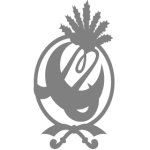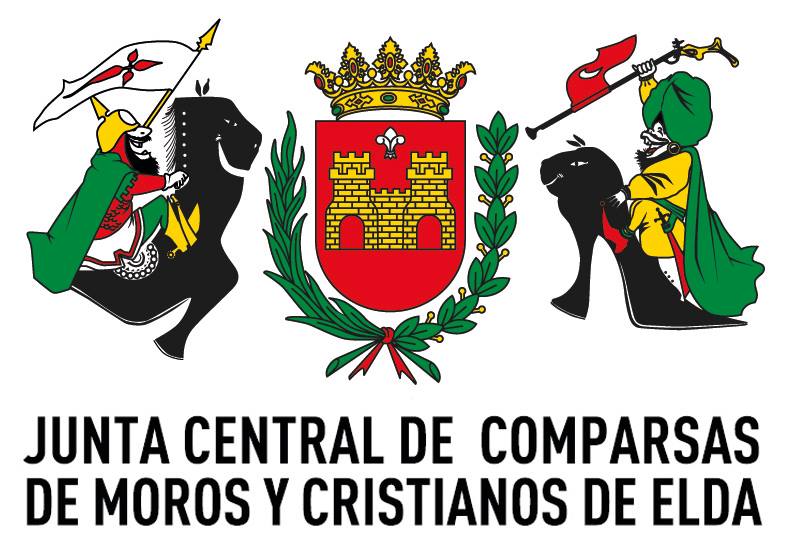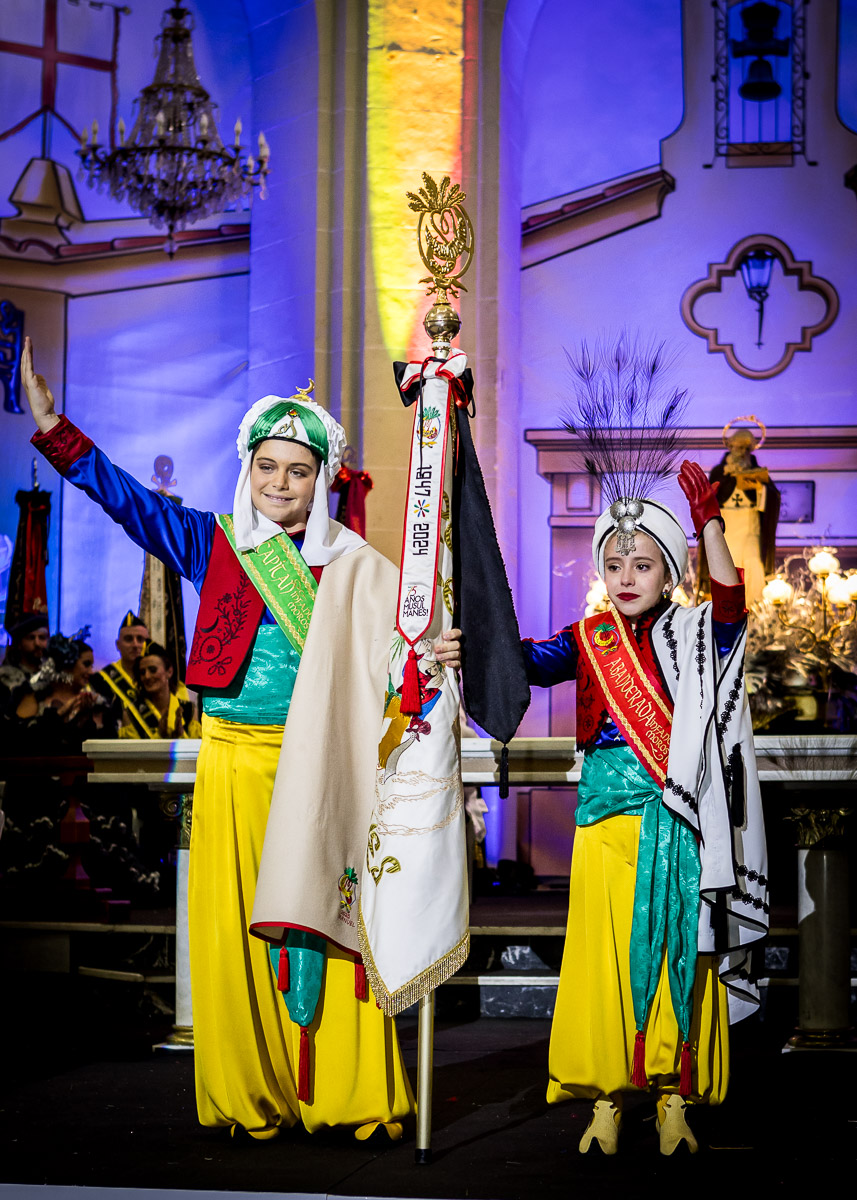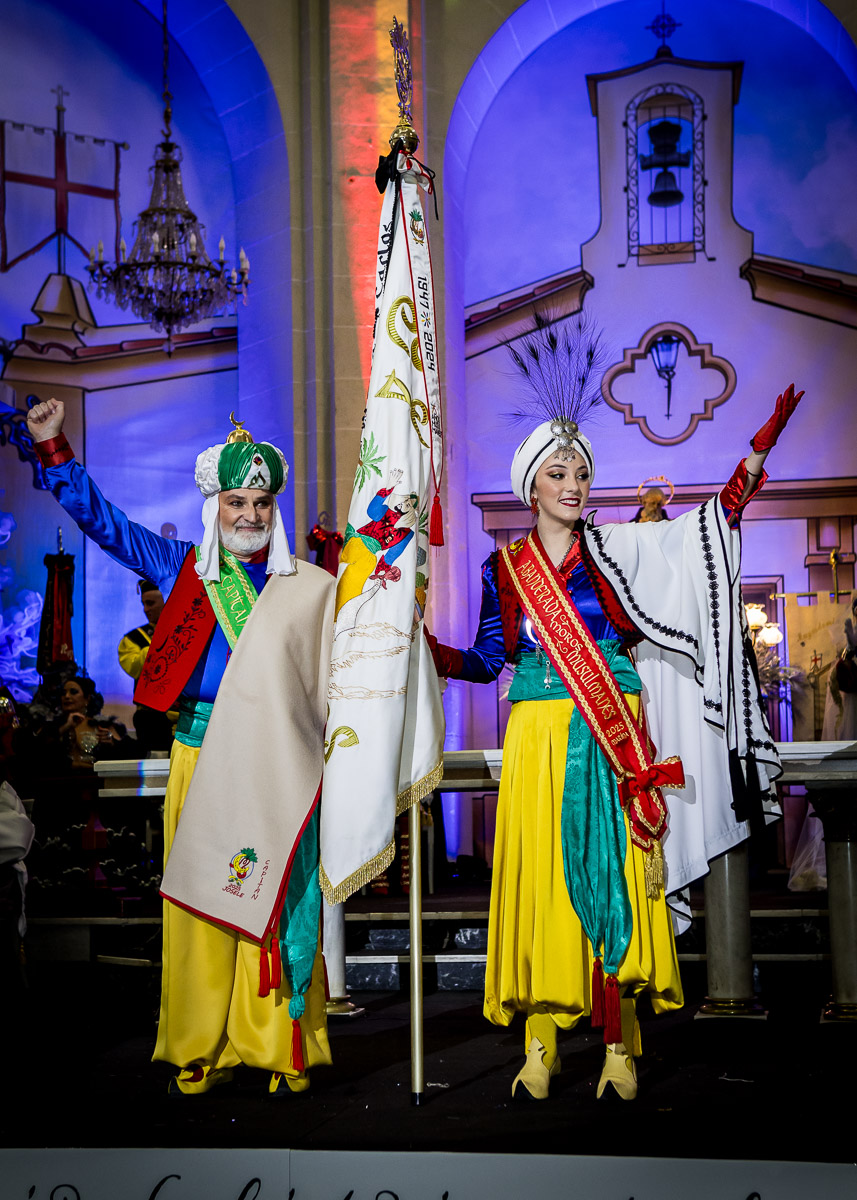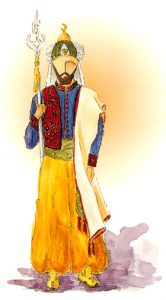
Just after the festivities of January 1946, Camilo Valor Estevan, a native of Villena, gathered a group of friends in a gathering at the Eldense Casino, with the proposal of founding and forming a new troupe to march in the festivities of Moors and Christians recently established, specifically in the Moorish side that was somewhat decimated in the number of comparsas compared to the Christian side. The group was founded by the following gentlemen: Bartolomé Maestre, José Aracil, Miguel Arráez, Rafael García Gómez, Froilán Gran, Joaquín Leal, Vicente Mañas, Alfredo Mira, José Ortín Amorós, Antonio Soriano, José Amat Sanchiz, Emilio Aracil Candelas, Herminio Bonete, Roberto Botella, José Mª Chinchilla, Antonio Díaz, Pascual Gil, Pedro Gómez, José Mª Gran, José Marcos Hernández, Ramón Mira Madrid, José Muñoz Ortega, Eugenio Orgilés, José Ortín Cerdán, Recaredo Pina, Oscar Santos, Enrique Vera, Juan Amat Navarro and Camilo Valor himself. On February 1st the group was definitively formed and its board of directors constituted. The paradoxical circumstance is that the latter, who was the main driving force behind the group and its first president, did not get to see it marching in the 1947 festivities due to his sudden death in April of that year.
The majority of its members were businessmen and trained professionals and this proves their interest in giving shape to an idea with good foundations: a quotation system was established from the first moment to provide the new company with good economic support: from January 1946 to May 1947 each member contributed ten pesetas a week in seventy quotations.
The group was founded in the image and likeness of the New Moors of Villena, entirely recreating the official costume of that group, and even the name of Muslims is the original name that this group had so deeply rooted in the festivities of the neighboring city. The first flag was blessed on May 31, 1947, the eve of the festivities of that year, and his godmother was Miss Luisa Gran, daughter of the first captain of the group that was Froilán Gran, and the flag bearer Lucia Vera Masegosa. The first parade of the comparsa told the chronicles that was apotheosis, accompanied by the local band Santa Cecilia and a squad imported from Villena, “El Planchao”.
The first costume, then, was exactly the same as that of the new Moorish villagers: white satin turban with black tassel on the top (“cheese”); yellow knickerbockers; blue shirt with red collar, cuffs and buttoning with embroidery; red felt embroidered vest; green damask satin sash with red tassels; beige left shoulder blanket with red tassels; yellow shoes with green or red crescent; leather apron and wooden backpack lined with leather, and a shovel as a weapon. In 1949 the apron, the backpack and the pickaxe disappeared and were replaced by the spear. The “cheese” gave way to another tricolor turban (white, red and green) that remained for some years until it was also replaced by the current one, white with two green stripes on its front and a metal dome on the top. In 1997 the official female costume was created, which, while maintaining the colours of the troupe, adapted its forms to the special idiosyncrasies of Muslim women.
The Capitanía de la comparsa, as this is how they call their social premises, is located at 20 Maximiliano García Soriano Street and was opened to the public during the 1984 festivities; later, after the reforms that were carried out for its fitting out, it was officially inaugurated on 25 May 1991.
The Muslim Moors group participates in all the events of the Eldense Festival, but it is also a pioneer in the creation and organization of other events – some exclusive to its own peculiarity – that take place throughout the festive year. An example of this is the presentation of charges that they celebrate in the Castelar Theatre of our city with truly spectacular stagings, the Friday mass of the festivities in the Saint’s own square, the Muslim wheel that same day in the Plaza Mayor, the multitudinous verbena in the gardens of the Casino on Sunday night or the visit to the geriatric home on Monday morning in solidarity with the people who are welcomed there. She was also the driving force behind the first percussion and dulzaina group -the Muslim colla- created in 1993, which has initiated the revitalization of this traditional music in our city.
